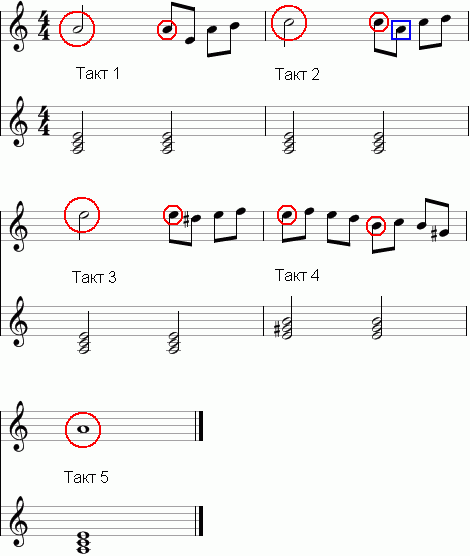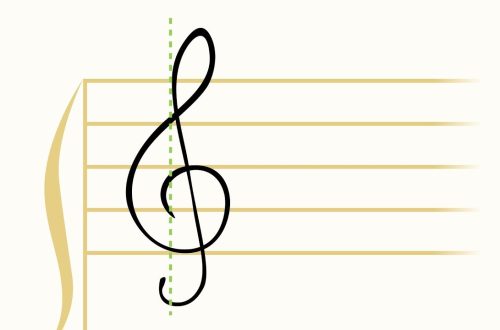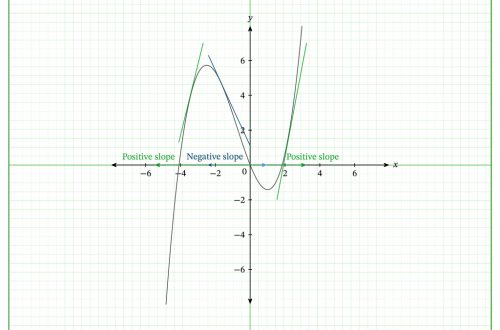
Tonic and its types
Contents
How to understand what sounds make up the “framework” of the melody?
The concept of “Tonic” was touched upon in the article ” Sustained sounds and unstable sounds. Tonic. “. In this article, we will look at the tonic in more detail.
What does the dictionary tell us about tonic? “Tonic is the main, most stable step of the mode, to which all the others ultimately gravitate … Tonic is the 1st, initial step of the scale of any mode.” Everything is correct. However, this is incomplete information. Since the tonic should create a feeling of completeness, peace, then under certain conditions the role of the tonic can be played by any degree of the mode, if this degree turns out to be more “stable” relative to the others.
Main tonic
If you look at the entire piece of music or its finished part, then the main tonic will be exactly the 1st step of the mode.
local tonic
If we look at a part of a piece and find a sustained sound that other sounds aspire to, then it will be the local tonic.
Not a musical example: we are driving from Moscow to Brest. Brest is our main destination. On the way, we make rest stops, stop for a bit at the border, stop at Belarusian castles – these are local destinations. Castles leave impressions on us, we remember the usual stops for rest poorly, we rarely pay attention to them, and the passenger Vasya generally sleeps and does not notice anything. But Vasya, of course, will see Brest. After all, Brest is the main goal of our trip.
The analogy must be traced. Music also has a main tonic (Brest in our example) and local tonics (rest stops, border, castles).
Tonic stability
If we consider the main and local tonics, we will see that the degree of stability of these tonics is different (an example will be given below). In some cases, the tonic is like a bold point. They call such a tonic “closed”.
There are local tonics that are quite stable, but imply a continuation. This is an “open” tonic.
harmonic tonic
This tonic is expressed by an interval or chord, usually consonant. Most often it is a major or minor triad. So the tonic can be not only one sound, but also a consonance.
melodic tonic
And this tonic is expressed precisely by a sound (sustained), and not by an interval or a chord.
Example
Now let’s look at all of the above with an example:


This fragment is written in the key of A minor. The main tonic is the note A, since it is the 1st step in the A-minor scale. We deliberately take the A-minor chord as an accompaniment in all measures (except the 4th), so that you can hear the varying degrees of stability of local tonics. So, let’s analyze:
Measure 1. The note A is surrounded by a large red circle. This is the main tonic. It is good to hear that it is stable. The note A is also surrounded by a small red circle, which is also well stable.
Measure 2. The note C is circled in a large red circle. We hear that it is quite stable, but is no longer the same “fat point”. It requires continuation (open tonic). Further – more interesting. The note Do, which is the local tonic, is circled in a small red circle, and the note La (in the blue square) does not show any tonic functions at all!
Measure 3. In the red circles are notes of E, which are quite stable, but require continuation.
Measure 4. Notes Mi and Si are in red circles. These are local tonics to which other sounds are subject. The stability of the sounds Mi and Si is much weaker than those that we have considered in the previous measures.
Measure 5. In the red circle is the main tonic. Let’s add that this is a melodic tonic. closed tonic. A chord is a harmonic tonic.
Outcome
You got acquainted with the concepts of main and local, “open” and “closed”, harmonic and melodic tonics. We practiced identifying different types of tonics by ear.





